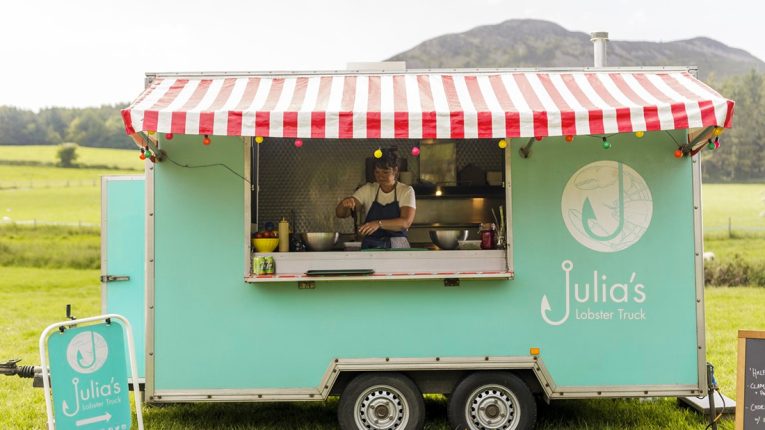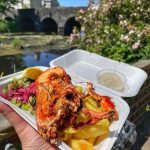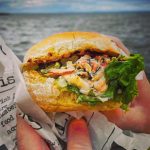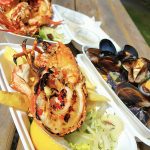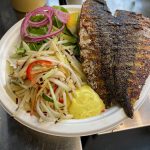The business was started by Julia Hemingway in 2017, serving fresh local shellfish cooked simply, in front of the customer. Her menu included barbecued lobster, steamed mussels, lobster rolls and traditional fish and chips. Her mission – to make fresh seafood and shellfish accessible to all.
The food business operates out of two outlets, one in Pot Duggans, a riverside bar and restaurant in Ennistymon and her mobile truck which moves around various locations in the Burren as well as food festivals Ireland. Julia sources all her seafood locally from the Atlantic Ocean close to her Burren base and many other dishes are accompanied by fresh local salad from market gardeners.
Julia’s career started over 25 years ago at Leith’s Cookery School in London, followed by restaurant jobs including working at the celebrated ‘French House’ in Soho, London. Later she moved to Dublin to work as a private chef to Ronnie Wood of ‘The Rolling Stones’ before relocating to the west of Ireland.
Freshness and quality underpin everything on Julia’s menu, which varies according to what she can source. This includes crab, mussels, fresh white fish, oily fish, bisque, oysters and of course, lobster. To reduce food waste particularly in her premium lobster dishes, she encourages customers to pre order.
Story
On the west coast of Ireland, the Atlantic Ocean has sustained fishermen, their families and local communities for generations. Fishermen traditionally caught a wide variety of fish, including mackerel, cod, pollock and skate as well as shellfish such as lobster, crab, oysters and mussels.
The lobster fishing season generally lasts from May to October each year, with the shellfish being caught using pots or creels. Lobsters are solidary creatures except for the breeding seasons and live for at least 20 years. Some have been estimated to live up to the age of between 50-70.
The lobster fishery and the creature itself are an intrinsic part of coastal Irish folklore and people’s livelihood, playing an important role in coastal cultural heritage as well as in Irish cuisine. In early colonial times, lobsters were plentiful and were considered the poor man’s chicken and often fed to pigs and goats as well as crushed up and used as fertilizers on the fields or used as fish bait. However later in the 18th century onwards, lobsters became popular particularly with the upper-class households in Ireland and the UK. This was the peak time for lobster industry in Ireland, with more than 23000 lobster fishermen employed, with an annual haul of 5000 tonnes of shellfish.
However, by the late 1920s recorded landings this had dramatically dropped to 430 tonnes and today there are only 100 tonnes of lobsters landed. However, even though the fishery returns much lower numbers now than nearly 100 years ago, the shellfish is still one of the most valuable landed species by Irish fleets.
The Land
The distinction between land and sea isn’t as sharp as we like to think. The limestone rock of the Burren extends offshore along the coast around New Quay, into Galway Bay in the northern part of the Geopark. The limestone provides lots of caves and crevices for the lobsters to shelter. Groundwater from the Burren flows underground and emerges in offshore springs, this brings nutrients and minerals from the land which supports marine biodiversity and a thriving population of lobsters.
